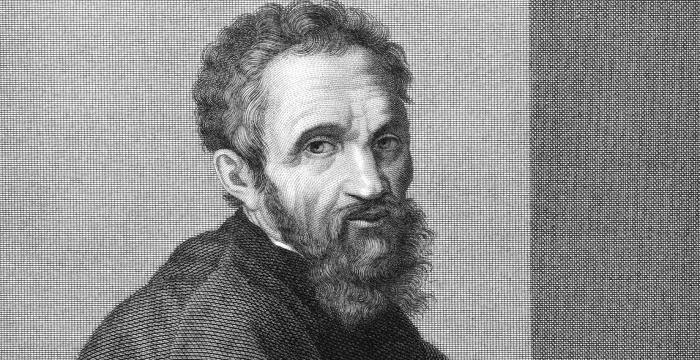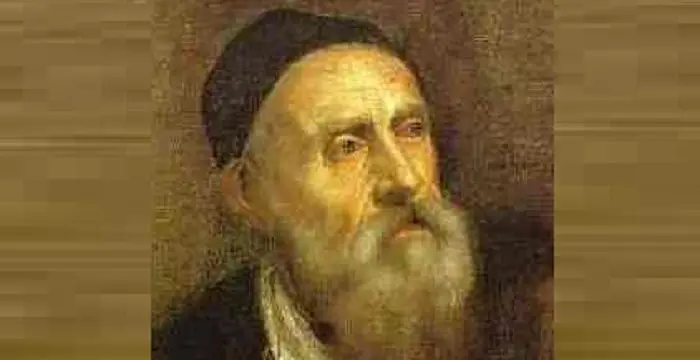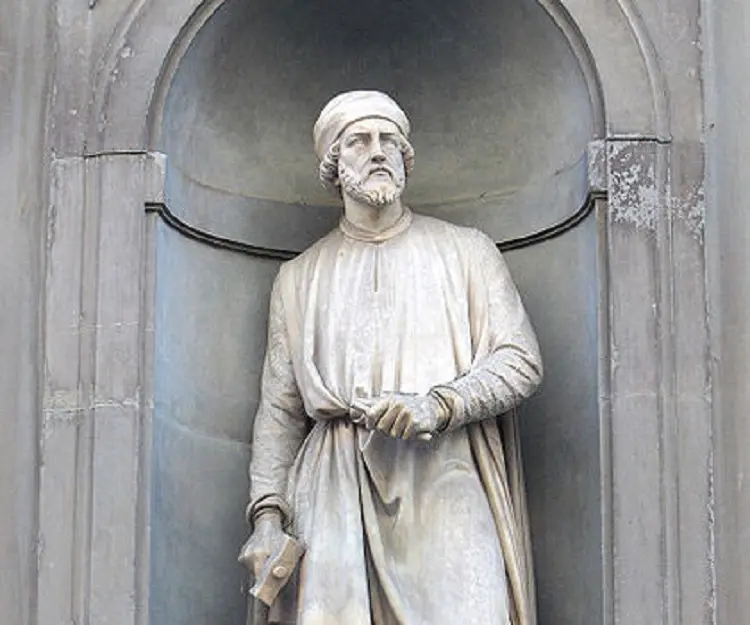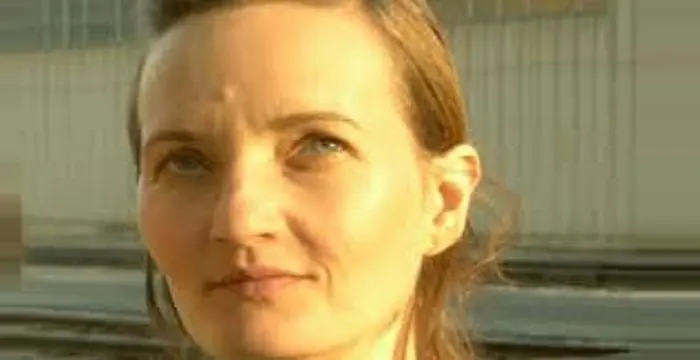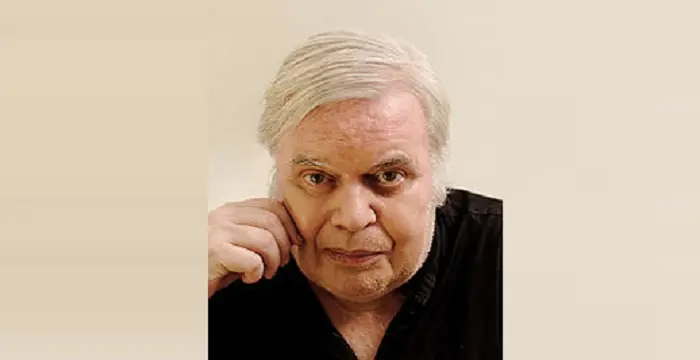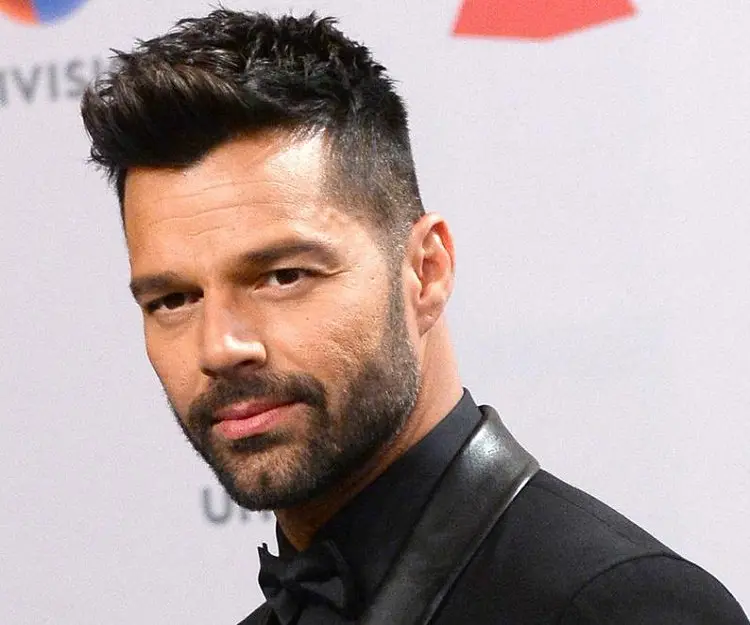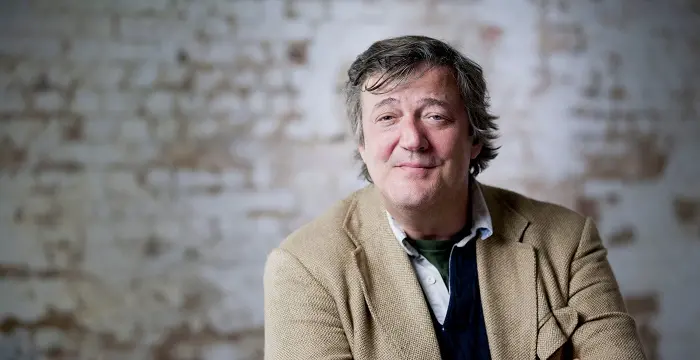
Donatello - Gays, Career and Childhood
Donatello's Personal Details
Donatello was one of the greatest Italian artists of the 15th century
| Information | Detail |
|---|---|
| Birthday | 1386 |
| Died on | December 13, 1466 |
| Nationality | Italian |
| Famous | Gays, Renaissance Artists, Artists, Sculptors, Miscellaneous |
| Known as | Donato di Niccolo Bardi |
| Birth Place | Florence |
| Religion | Catholicism |
| Gender | Male |
| Born in | Florence |
| Famous as | Sculptor |
| Died at Age | 80 |
// Famous Renaissance Artists
Michelangelo
Michelangelo was an Italian sculptor, painter, architect and poet. He is considered to be one of the greatest artists of the High Renaissance period. Know more about his childhood, life, achievements, works & timeline, in this brief biography
Albrecht Altdorfer
Albrecht Altdorfer was an iconic German painter, printmaker, engraver, drafter and architect of the Renaissance era. Check out this biography to know about his childhood, family life, achievements and other facts related to his life.
Titian
Titian was an Italian painter and one of the greatest artists of the Renaissance period. This biography of Titian provides detailed information about his childhood, life, achievements, works & timeline.
Donatello's photo
Who is Donatello?
Fifteenth century Italy witnessed a resurgence of art through the works of Donatello, the greatest and probably the most influential individual artist and sculpture then. Donatello, from an early age, showed signs of making it big in the world of art and sculpture. Pursuing his interest, he apprenticed early and meticulously learned the detailed nuances of the field. As such, he started receiving commissions for his work early on. Famous for his larger-than-life figures, Donatello evolved as an artist; his latter works being a stark contrast to his earlier ones, in terms of innovativeness. He infused emotions to his work, his sculptures denote feelings of suffering, joy, sorrow and happiness through their face and body position. His most famous work was a bronze statue of David, depicting an allegory of civic virtues winning over brutality and irrationality. The statue was one-of-its-kind for it was the first sculpture to stand independently, devoid of any architectural surrounding.
// Famous Miscellaneous
Jason Simpson
Jason Simpson is the son of former NFL running back, broadcaster and actor O. J. Simpson. Check out this biography to know about his childhood, family, life, and little known facts about him.
Melissa Brim
Melissa Brim is the ex-girlfriend of former professional boxer Floyd Mayweather Jr. Check out this biography to know about her birthday, childhood, family life, achievements and fun facts about her.
Joyce Meyer
Joyce Meyer is a Christian author and speaker. This biography provides detailed information about her childhood, life, achievements, works & timeline
Childhood & Early Life
Donatello was born as Donato di Niccolo di Betto Bardi in 1386 in Florence, Italy to Niccolo di Betto Bardi. His father was a member of the Florentine Wool Combers Guild.
Young Donatello attained his early education from the Martelli’s, an influential and wealthy Florentine family. His stint with art and sculpture started early, as he received his artistic training in a goldsmith's workshop. He gained knowledge about metallurgy and fabrication of metals and other substances.
In 1403, he apprenticed at the studio of Lorenzo Ghiberti, learning the nuances of Gothic sculpting. Later, he assisted Ghiberti who was commissioned to create bronze doors for the Florentine Baptistery.
He befriended Filippo Brunelleschi. The two then undertook a tour of Rome from 1404 to 1407, excavating the ruins to study classical art. It was during the trip that Donatello developed an understanding of ornamentation and classical forms. The tour casted a deep influence on both Brunelleschi and Donatello, thereby changing the face of Italian art in the 15th century.
Career
Returning to Florentine in 1408, he took to working at the workshops of Cathedral in Florence. He assisted Ghiberti for the statues of prophets that were likely to be erected at the north door of the Cathedral.
By 1408, he completed the life-size marble sculpture of David. It was amongst the earliest works of Donatello and thus lacked the emotional touch and innovativeness that formed a vital part of his latter works. The sculpture, originally intended for the cathedral, was moved to Palazzo Vecchio in 1416 as a mark of Florentine Republic.
From 1409 to 1411, he worked on the colossal seated figure of Saint John the Evangelist. The sculpture marked the shift in Donatello’s gothic work infusing realism and naturalism. The sculpture was first seated at the old cathedral façade. It now occupies a seat at the Museo dell'Opera del Duomo.
Donatello’s art style soon matured, as his figures boasted of becoming more dramatic and emotional. From 1411 to 1413, he worked on a statue of St. Mark for the guild church of Orsanmichele. Thereafter, he started working on the sculpture of Saint George for the Confraternity of the Cuirass-makers which he completed in 1417
From 1423, he started working on the Saint Louis of Toulouse for the Orsanmichele, which is today placed in the Museum of the Basilica di Santa Croce. Originally, he also sculpted the framework for the work.
From 1415 to 1426, he worked on five statues that were essentially created for the campanile of Santa Maria del Fiore in Florence. The five statues include the ‘Beardless Prophet’ (1415), Bearded Prophet (1415), the ‘Sacrifice of Isaac’ (1421), ‘Habbakuk’ (1423–1425), and ‘Jeremiah’ (1423–1426).
Between 1425 and 1427, he befriended architect and sculpture Michelozzo. The two travelled to Rome and worked on several architectural and sculptural tombs including the tomb of Antipope John XXIII and Cardinal Rainaldo Brancacci. Additionally, he sculpted the statues of Faith and Hope for Baptistery of San Giovanni in Siena.
In the course of his artistic life, Donatello had developed close relations with several art patrons, including Cosimo de’ Medici. In 1430, Medici entrusted him with the task of sculpting a bronze statue of David for the court of his Palazzo Medici.
The bronze status of David became the magnum opus of Donatello’s art career. It depicts an allegory of civic virtues winning over brutality and irrationality. Standing a little over five feet, the statue independently rests without any architectural support of any kind. This made it the first known free-standing nude status produced since ancient times. Furthermore, it gave a head start to the Renaissance period of art, thus becoming the first major Renaissance sculpture.
During Cosimo’s period of exile, Donatello travelled to Rome. He returned only in 1433 but not before leaving his mark on the city’s classical art façade with his two works, Tomb of Giovanni Crivelli at Santa Maria in Aracoeli, and the Ciborium at St. Peter's Basilica.
Upon reaching Florence, he was commissioned to make a marble pulpit on the façade of Prato Cathedral. Inspired by ancient sarcophagi and Byzantine ivory chests, he came up with a passionate, pagan, rhythmically conceived bacchanalian dance of half-nude putti.
Before travelling to Padua in 1443, he finished a couple of projects including Annunciation for the Cavalcanti altar in Santa Croce, wooden statue of St. John the Evangelist for Santa Maria Gloriosa dei Frari in Venice and bust of a Young Man with a Cameo.
In 1443, Donatello was invited to Padua by the family of the famous mercenary Erasmo da Narni, who had died earlier that year. He was entrusted with the task of sculpting a bronze statue of Erasmo riding a horse in full battle dress, minus a helmet. Fondly named Gattamelata, it became the first equestrian statue cast in bronze since the Romans. The sculpture became a model for other equestrian monuments later created in Italy and Europe.
Returning to Florence in 1453, he remained in Seina and created a St. John the Baptist for the Duomo, and models for its gates, the work which is now lost.
With help of Bartolomeo Bellano and Bertoldo di Giovanni, his students, he completed his last work of producing reliefs for the bronze pulpits in the church of San Lorenzo. He provided the general design and personally executed the Martyrdom of St. Lawrence and the Deposition from the Cross. He worked on the reliefs of Christ before Pilate and Christ before Caiphus, with Bellano
Major Works
Donatello was famous for creating colossal sculptures that were lifelike and filled with deep emotions. His greatest work was the bronze statue of David. It was by far the most classical of his works. The most interesting aspect of the sculpture was its free-standing nature. It was so brilliantly proportioned and poised that it stood independently, without any architectural setting. David depicted the allegory of civic virtues winning over brutality and irrationality.
Personal Life & Legacy
If anecdotes by Angelo Poliziano in his ‘Detti piacevoli’ or studies of his magnum opus bronze sculpture of David are to be believed, Donatello was a homosexual. It is assumed that his friends were aware of his sexual orientation and tolerated the same. However, there are no strong proofs that testify the same.
He died of unknown reasons on December 13, 1466, in Florence. He was buried in the Basilica of San Lorenzo, next to Cosimo de' Medici.
Posthumously, an unfinished work was completed by his student Bertoldo di Giovanni.
Trivia
He was the greatest and most influential Italian artist of the 15th century, having a reputation that was second only to Michelangelo.
// Famous Sculptors
Yvonne McGuinness
Yvonne McGuinness is an Irish multimedia artist. This biography profiles her childhood, family, personal life, career, etc.
Michelangelo
Michelangelo was an Italian sculptor, painter, architect and poet. He is considered to be one of the greatest artists of the High Renaissance period. Know more about his childhood, life, achievements, works & timeline, in this brief biography
H. R. Giger
The famous designer of science fiction movie ‘Alien’, H. R. Giger is known for his surrealist and pioneering set-designs, sculptures and paintings. To know more about his childhood, career, profile and timeline read on.
Donatello biography timelines
- // 1386Donatello was born as Donato di Niccolo di Betto Bardi in 1386 in Florence, Italy to Niccolo di Betto Bardi. His father was a member of the Florentine Wool Combers Guild.
- // 1403In 1403, he apprenticed at the studio of Lorenzo Ghiberti, learning the nuances of Gothic sculpting. Later, he assisted Ghiberti who was commissioned to create bronze doors for the Florentine Baptistery.
- // 1404 To 1407He befriended Filippo Brunelleschi. The two then undertook a tour of Rome from 1404 to 1407, excavating the ruins to study classical art. It was during the trip that Donatello developed an understanding of ornamentation and classical forms. The tour casted a deep influence on both Brunelleschi and Donatello, thereby changing the face of Italian art in the 15th century.
- // 1408Returning to Florentine in 1408, he took to working at the workshops of Cathedral in Florence. He assisted Ghiberti for the statues of prophets that were likely to be erected at the north door of the Cathedral.
- // 1408 To 1416By 1408, he completed the life-size marble sculpture of David. It was amongst the earliest works of Donatello and thus lacked the emotional touch and innovativeness that formed a vital part of his latter works. The sculpture, originally intended for the cathedral, was moved to Palazzo Vecchio in 1416 as a mark of Florentine Republic.
- // 1409 To 1411From 1409 to 1411, he worked on the colossal seated figure of Saint John the Evangelist. The sculpture marked the shift in Donatello’s gothic work infusing realism and naturalism. The sculpture was first seated at the old cathedral façade. It now occupies a seat at the Museo dell'Opera del Duomo.
- // 1411 To 1417Donatello’s art style soon matured, as his figures boasted of becoming more dramatic and emotional. From 1411 to 1413, he worked on a statue of St. Mark for the guild church of Orsanmichele. Thereafter, he started working on the sculpture of Saint George for the Confraternity of the Cuirass-makers which he completed in 1417
- // 1415 To 1426From 1415 to 1426, he worked on five statues that were essentially created for the campanile of Santa Maria del Fiore in Florence. The five statues include the ‘Beardless Prophet’ (1415), Bearded Prophet (1415), the ‘Sacrifice of Isaac’ (1421), ‘Habbakuk’ (1423–1425), and ‘Jeremiah’ (1423–1426).
- // 1423From 1423, he started working on the Saint Louis of Toulouse for the Orsanmichele, which is today placed in the Museum of the Basilica di Santa Croce. Originally, he also sculpted the framework for the work.
- // 1425 To 1427Between 1425 and 1427, he befriended architect and sculpture Michelozzo. The two travelled to Rome and worked on several architectural and sculptural tombs including the tomb of Antipope John XXIII and Cardinal Rainaldo Brancacci. Additionally, he sculpted the statues of Faith and Hope for Baptistery of San Giovanni in Siena.
- // 1430In the course of his artistic life, Donatello had developed close relations with several art patrons, including Cosimo de’ Medici. In 1430, Medici entrusted him with the task of sculpting a bronze statue of David for the court of his Palazzo Medici.
- // 1433During Cosimo’s period of exile, Donatello travelled to Rome. He returned only in 1433 but not before leaving his mark on the city’s classical art façade with his two works, Tomb of Giovanni Crivelli at Santa Maria in Aracoeli, and the Ciborium at St. Peter's Basilica.
- // 1443Before travelling to Padua in 1443, he finished a couple of projects including Annunciation for the Cavalcanti altar in Santa Croce, wooden statue of St. John the Evangelist for Santa Maria Gloriosa dei Frari in Venice and bust of a Young Man with a Cameo.
- // 1443In 1443, Donatello was invited to Padua by the family of the famous mercenary Erasmo da Narni, who had died earlier that year. He was entrusted with the task of sculpting a bronze statue of Erasmo riding a horse in full battle dress, minus a helmet. Fondly named Gattamelata, it became the first equestrian statue cast in bronze since the Romans. The sculpture became a model for other equestrian monuments later created in Italy and Europe.
- // 1453Returning to Florence in 1453, he remained in Seina and created a St. John the Baptist for the Duomo, and models for its gates, the work which is now lost.
- // 13th Dec 1466He died of unknown reasons on December 13, 1466, in Florence. He was buried in the Basilica of San Lorenzo, next to Cosimo de' Medici.
// Famous Gays
Wentworth Miller
Wentworth Miller is an American actor and screenwriter who achieved recognition for his role in the TV series ‘Prison Break’.
Tennessee Williams
Tennessee Williams was one of the greatest playwrights of the 20th century. This biography of Tennessee Williams provides detailed information about his childhood, life, achievements, works and timeline.
Leo Varadkar
Cam Leo Varadkar is the current Taoiseach—the Prime Minister—of the Republic of Ireland. Check out this biography to know about his childhood, family life, achievements and other facts about his life.
Ricky Martin
Ricky Martin is a prominent Puerto Rican pop singer, songwriter and actor, who was a singing sensation during the 1990s. This biography profiles his childhood, life, music career, achievements and timeline
Stephen Fry
Stephen Fry is a comedian, actor, author, television and radio presenter. Read the biography and know all about his childhood, career, profile and timeline.
Willam Belli
Willam Belli is an American actor, drag queen, model and reality TV personality. Check out this biography to know about his childhood, family life, achievements and fun facts about him.
Donatello's FAQ
When was Donatello died?
Donatello was died at 1466-12-13
Where was Donatello died?
Donatello was died in Florence
Which age was Donatello died?
Donatello was died at age 80
Where is Donatello's birth place?
Donatello was born in Florence
What is Donatello nationalities?
Donatello's nationalities is Italian
What is Donatello's religion?
Donatello's religion is Catholicism
How famous is Donatello?
Donatello is famouse as Sculptor
